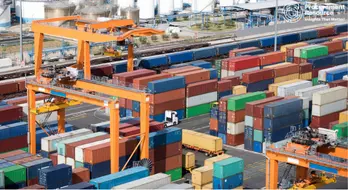Leaders Criticise Fukusima’s Water Plan of Dumping Treated Water in the Pacific Ocean

About 51,659 people are located only 2,500 kilometres (1,553 miles) southeast of Japan. Japan's plan, officially announced last year, has been declared unacceptable by the islands' leaders in The Northern Mariana Islands, a US territory. At present, Japan intends to dispose of all treated wastewater over approximately 30 years.
Anxiety is high among Japanese fishers and coastal communities in the area. And its plan has been met with outspoken opposition from neighbouring countries such as China, South Korea, Taiwan, and Pacific Island countries and the Pacific Islands Forum, the region's intergovernmental organisation.
This water adds to the already polluted ocean from nuclear waste, jeopardising the lives and livelihoods of islanders who rely heavily on marine resources. These include both coastal and pelagic fisheries, such as tuna. The use of the Pacific Islands for nuclear weapons testing by the United States, the United Kingdom, and France from the 1940s to the late twentieth century has fueled intense disagreement amongst islanders to any nuclear-related activity in the region.
Radioactive contamination from over 300 atmospheric and underwater nuclear tests rendered many locations uninhabitable, particularly in the Republic of the Marshall Islands and French Polynesia and caused irreversible long-term health problems in affected communities.
Satyendra Prasad, the Chair of Pacific Islands Forum Ambassadors at the United Nations, prompted the world in September last year of the Pacific's ongoing struggle with the legacy of nuclear testing, which ranges from transboundary contamination of homes and habitats to an increase in the number of congenital disabilities and cancers.
In 1985, regional leaders prohibited member countries, including Australia, New Zealand, and Pacific Island nations, from testing and using nuclear explosive devices and dumping radioactive waste into the sea. Three nuclear reactors melted down when the earthquake and tsunami struck the Fukushima nuclear power plant.
Pumping cooling water through damaged infrastructure to prevent overheating is part of the decommissioning process, which could take four decades. Approximately 170 cubic metres of treated wastewater accumulates every day, eventually filling at least 1,000 tanks throughout the site.
The Japanese government claims that the water must be released because there isn't enough space to store it. After announcing its plan in April of last year, it claims that it consulted with other countries in the region, holding briefings with Pacific Island Forum countries and the organization's secretariat. It says that it will work with the international community and follow relevant international standards.
Experts from the International Atomic Energy Agency, France, Germany, and the Republic of Korea visited Japan in November of last year to collect samples such as fish. These samples will be separated and sent to these labs for analysis.
The sea area monitoring will be enhanced beginning one year before the discharge, which is scheduled to begin in spring 2022 under the current plan. Before discharge into the sea, the concentration of the nuclides regulated by law, such as tritium and carbon-14, will be measured, and the results will be made public.
This is logistically feasible, and it will give time for more efficient processing technology to be deployed and allow the threat posed by radioactive tritium to naturally diminish, according to the environmental group.
According to Greenpeace, while the Japanese government considered allocating land for storage in Okuma and Futaba, ocean discharge was deemed more accessible and less time-consuming. The Citizens Committee on Nuclear Energy (CCNE), an expert civil society organisation, supports the wastewater storage option, as does Tilman Ruff, associate professor at the Institute for Global Health at Melbourne in Australia.
Their recommendation for water management is that the first step is to store it in properly constructed secure long-lasting large tanks like those used by Japan for its national oil and petroleum reserves.
The Japanese government insists that the radiation effect on human health because of the discharge will be minor, specifying that it will be 0.00081 mSv/year, a fraction of the natural radiation exposure level, which is estimated to be 2.1 mSv/year. However, medical experts are concerned about the massive amount of wastewater and the potential fallout from even trace amounts of Tritium, a radioactive isotope that will not be removed during treatment.

